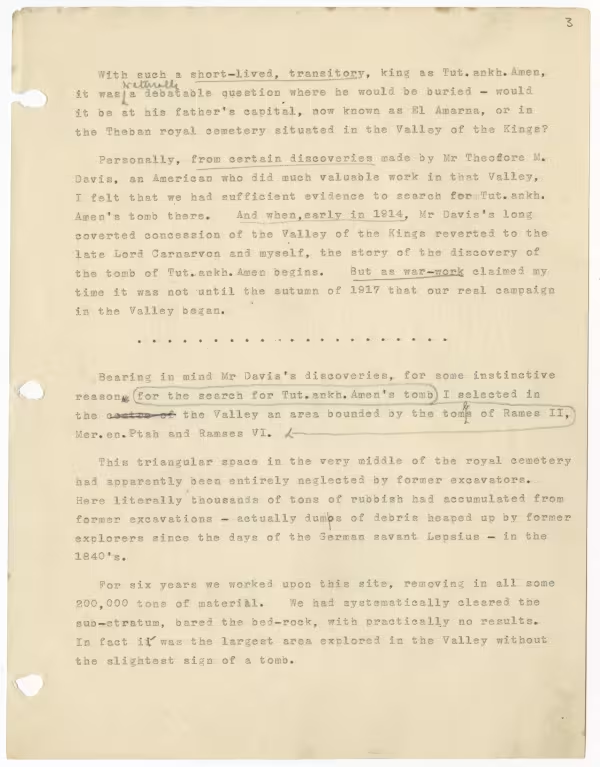TAA i.12.02

© Griffith Institute,
University of Oxford
(3)
With such a short-lived, transitory, king as Tut.ankh.Amen,
it was <Naturally> a debatable question where he would be buried – would
it be at his father’s capital, now known as El Amarna, or in
the Theban royal cemetery situated in the Valley of the kings?
Personally, from certain discoveries made by Mr Theodore M.
Davis, an American who did much valuable work in that Valley,
I felt that we had sufficient evidence to search for Tut.ankh.
Amen’s tomb there. And when, early in 1914, Mr Davis’s long
coverted concession of the Valley of the Kings reverted to the
late Lord Carnarvon and myself, the story of the discovery of
the tomb of Tut.ankh.Amen begins. But as war-work claimed my
time it was not until the autumn of 1917 that our real campaign
in the valley began.
…………………
Bearing in mind Mr Davis’s discoveries, for some instinctive
reason, for the search for Tut.ankh.Amen’s tomb I selected in
the centre of the Valley an area bounded by the tom<b>s of Ramessic II,
Mer.en.Ptah and Ramses VI.
This triangular space in the very middle of the royal cemetery
had apparently been entirely neglected by former excavators.
Here literally thousands of tons of rubbish had accumulated from
former excavations – actually dumo/<p>s of debris heaped up by former
explorers since the days of the German savant Lepsius – in the
1840’s.
For six years we worked upon this site, removing in all some
200,000 tons of material. We had systematically cleared the
sub-stratum, bared the bed-rock, with practically no results.
In fact ii/<t> was the largest area explored in the Valley without
the slightest sign of a tomb.